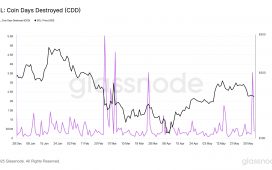The Covid inquiry has so far been a damning spectacle, reinforcing everyone’s worst suspicions about the government response to the pandemic. It has revealed a horrible swirl of bad decisions, relentless infighting and a callous lack of empathy. But, through it all, there has been one true victim of the inquiry. One figure whose name has been needlessly besmirched time and time again, by almost everyone in government. One figure whose reputation is now in tatters thanks to a number of cruel and potentially defamatory comparisons. This figure is, of course, the shopping trolley.
While giving evidence to the inquiry yesterday, Dominic Cummings declared that Boris Johnson was so indecisive and susceptible to outside advice that he would often change direction on his policies without warning. This led to him being given the nickname “the Trolley”, not only by Cummings but also by Johnson’s cabinet secretary and director of communications. The nickname stuck so fast that officials would refer to Johnson in texts by simply posting an emoji of a trolley.
This is, quite frankly, scurrilous behaviour. Shopping trolleys are fine and wonderful things, and they do not deserve to be in any way compared to Johnson. Indeed, it’s impossible to imagine how much more difficult life would be had the trolley never been created.

The shopping trolley was invented in 1937 by Sylvan Goldman, an Oklahoma businessman whose parents had emigrated to the US from Latvia and France. Despite dropping out of education in his early teens, Goldman became a grocery wholesaler, eventually starting the Humpty Dumpty chain of supermarkets. It was there that he noticed a common problem. In the 1930s, women traditionally did the shopping and they would often take their young children with them. Goldman saw how difficult it was for these mothers to simultaneously hold a shopping basket, fill it with items and look after their children. And so, struck by inspiration, he decided to make a great big shopping basket on wheels.
However, the new invention failed to catch on – one suggestion is that this was down to its resemblance to a pram – until Goldman hired models to push the trolleys around his stores to demonstrate how convenient they were. This was all the push they needed and soon Goldman, who collected a royalty every time a shopping trolley was manufactured in the United States, became a multi-millionaire.
Advancements in trolley technology have been few and far between since this initial burst of creativity. The US engineer Orla Watson improved on Goldman’s idea in 1946 by making one trolley wall hinge at the top, allowing trolleys to nest together and save space. A year later, Goldman added a child seat. At this point the trolley attained a state of immortal perfection; so much so that further innovations – self-driving trolleys, trolleys that come with tablets and scanners, AI-assisted carts that suggest additional purchases based on what you’re buying – have failed to improve upon what is, at heart, an iconic creation.

But Cummings didn’t call Johnson a trolley because he was timeless and iconic. No, he called him a trolley because he became fixated on what might constitute the shopping trolley’s one real design flaw: its wheels.
Shopping trolleys run on floating swivel castors that can turn independently of each other. This makes sense from a design perspective – it greatly reduces the trolley’s turning circle, making them easy to navigate in tight spaces – but in reality it can create problems. Trolleys are high-use items that aren’t always treated with enough care and a number of factors can cause problems with the castors. They can often succumb to issues such as rivet failure (caused by the impact of heavy items thrown in by shoppers), along with tugging wheels (caused by poor castor lubrication) and brinelling (where the castors become dented from overuse).
It should be pointed out that this is a specifically British problem. In the US, shopping trolleys often have fixed rear wheels, which can reduce manoeuvrability but will also increase stability. Instead, over here we have to rely upon those in charge of the wobbly trolleys to take better care of them, either by investing in better maintenance or by replacing the whole thing as soon as it becomes a problem. In this regard, perhaps the Johnson comparison is justified.








